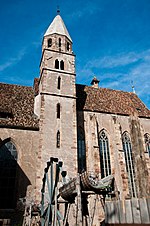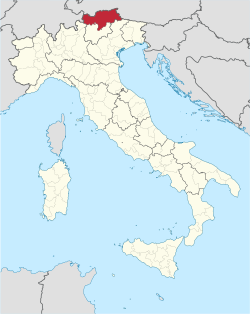Bolzano/Bozen railway station

Bolzano/Bozen railway station (IATA: BZQ) (Italian: Stazione di Bolzano, German: Bozen Bahnhof) is the main station of Bolzano/Bozen, capital of the autonomous province of Alto Adige/Südtirol, in northeastern Italy. The station was opened in 1859 by the Austrian Empire's Südbahn. It is located on the trans-Alpine Brenner Railway and a terminus of a branch line to Merano/Meran (County of Tirol's former capital), which continues to become Vinschgau Railway Merano/Meran-Malles/Mals. The station is currently managed by Rete Ferroviaria Italiana (RFI). The commercial area of the passenger building, however, is managed by Centostazioni. Train services to and from the station are operated by Trenitalia, ÖBB-DB, Südtirol Bahn and Russian Railways (RZD).
Excerpt from the Wikipedia article Bolzano/Bozen railway station (License: CC BY-SA 3.0, Authors, Images).Bolzano/Bozen railway station
Piazza della Stazione - Bahnhofsplatz, Bolzano - Bozen Centro-Piani-Rencio - Zentrum-Bozner Boden-Rentsch
Geographical coordinates (GPS) Address Phone number Nearby Places Show on map
Geographical coordinates (GPS)
| Latitude | Longitude |
|---|---|
| N 46.496666666667 ° | E 11.358333333333 ° |
Address
Edicola Stazione F.S.
Piazza della Stazione - Bahnhofsplatz 1
39100 Bolzano - Bozen, Centro-Piani-Rencio - Zentrum-Bozner Boden-Rentsch
Trentino-Alto Adige/Südtirol, Italy
Open on Google Maps











